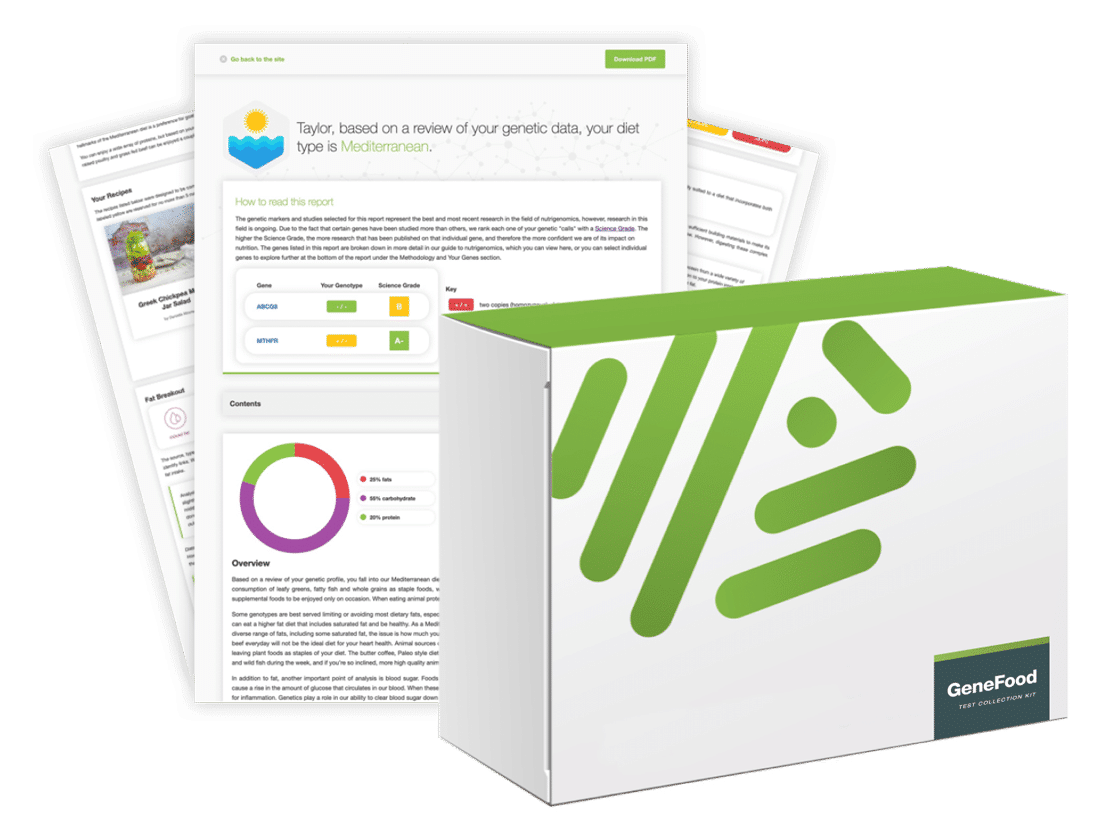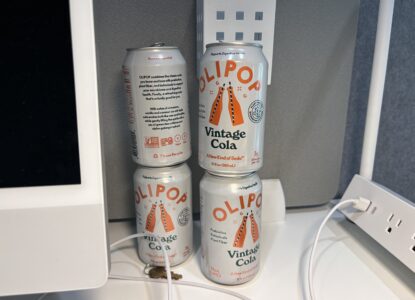My InsideTracker Review: Breaking Down Pros and Cons
Article at a Glance
- Inside Tracker is a secure, lightning fast app built by a well respected team that emphasizes HIPAA and SOC2 compliance.
- The app offers genetic and blood analysis. Users who do not have either source of data can test through Inside Tracker.
- SNPs that form the risk scores for the various genetic health traits are not disclosed making the DNA piece a bit of a “black box.”
- Although the product is excellent and actionable, it takes work to get your data into the app, it’s a large time commitment.
- The diet advice is respectable, but lacked granularity when you factor in the data set provided.

Contents
I have been in the personalized health and nutrition space for almost a decade now and get asked all the time by friends what products (outside of Gene Food) I recommend.
I’ve long admired the team at Inside Tracker and decided to give the app a shot, in part because they feature a genetic report, and DNA analysis is a passion of mine, but also to stay current so my team and I are aware of market trends.
Because I have had a ton of genetic testing and blood work done already, the annual membership (where I can import my own data) was the easy choice. Based on reading some other online reviews about intermittent difficulties coordinating blood testing purchased through Inside Tracker, I think this will also be the best bet for most users. If you have the opportunity to bring testing you’ve already done with labs like Quest Diagnostics (that your insurance covers) to the Inside Tracker app, the annual membership fee is a no-brainer.
Before diving into the product itself, many of my readers will want to know about security, and InsideTracker is transparent about HIPAA and SOC2 compliance. That box is checked.
The sales and signup process is intuitive and easy, although I did have a hiccup transitioning from signup to first login and had to reset my password to gain access to the backend for the first time. It was unclear where I stood in the account creation process after initially signing up. It could have been user error, but as someone who pays close attention to the user experience of the applications I use, this was a minor irritation.
Account setup and intake
I appreciated that a truncated intake flow was an option.
Of the other products I’ve tested, like Viome and Function Health, InsideTracker had the lightest touch with mandatory data entry upon starting out. I was able to skip a deeper questionnaire and focus on their core intake questions.

I didn’t know my hip circumference or resting heart rate (not wearing a sleep tracker at the moment), and the app allowed me to move on and come back to these questions, which I appreciate as a user because it respects my time.
The intake section that prompted me to answer questions about the different types of food I eat each week and in what amounts made me think of nutritional epidemiology and how fraught that world is when it comes to precision data. I am the founder of a nutrition startup and even I don’t know exactly how much of each of these foods I eat, so the baseline food frequency questionnaire, at least in my view, isn’t all that valuable.
The rest of the intake process asked me for exercise habits, how much sleep I get, if I work out, and what my goals are.
Once into my report, I uploaded a 23andme raw data file and was instantly given access to some reports.
Breaking down my heart health results

Because I am a huge lipid nerd, I gravitated to the Heart Health report, and saw that my data file was flagged as having a greater risk of elevated triglycerides, which is consistent with my Gene Food Diet type, which is Wayoan.
I looked around but couldn’t see the SNPs that formed the basis of the report, so I asked Inside Tracker AI (very cool feature) what the SNPs were that justified the call of a risk for elevated TGs.

Get Started With Personalized Nutrition
Gene Food uses a proprietary algorithm to divide people into one of twenty diet types based on genetics. We score for cholesterol and sterol hyperabsorption, MTHFR status, histamine clearance, carbohydrate tolerance, and more. Where do you fit?
The answer, that the SNPs that form the polygenic risk scores were not disclosed, for me was less than satisfying, and would potentially disappoint biohacker types who want to evaluate their data with granularity. It also prevents the user from seeing an accounting of which SNPs were given the greatest weight in each risk score.
For example, at Gene Food we “show our math” with the SNP call and Science Score weight for each gene we evaluate in each report.
Next, I began manually adding in my labs starting with the biomarkers I care most about. I added an ApoB lab from the Holiday season last year and sure enough the app flagged me as out of range at 92 mg/dL.

Armed with the knowledge that my ApoB was out of range last fall, the app recommended:
- Ground flaxseeds daily
- Increase in soy foods
- More olive oil
- Increase veggie variety
The recommendations themselves are rated based on Inside Tracker’s estimated impact and the ground flaxseeds recommendation scored as a 10 on the impact scale. In light of my genetic score indicating I may have a predisposition towards higher triglycerides, and at least according to Inside Tracker, my LDL-C risk being average, I was looking for diet recommendations that would recommend reducing simple carbs and sugars, because the data I provided indicated the potential for triglyceride rich LDL.
Again, this was a blood draw right around the Holidays so I hadn’t been eating like I should have and my sdLDL was also slightly elevated. There wasn’t an option to add LDL sub-fraction (like sdLDL) to the app despite the fact that, at least in my view, it would be helpful at further identifying the TG rich phenotype.
When I added in my borderline TG numbers from this draw, the app had more data and came back with additional recommendations. The TG result triggered dietary changes for more oolong tea, more shellfish, and more nuts (which is somewhat problematic for me as a borderline hyper-absorber).
The Gut Health and Heart Health recommendations were identical.
Adding LDL-C at 100 mg/dL from the same draw triggered a recommendation for more beans and probiotic foods, with a picture of dairy based yogurt as the avatar. I could see how kimchi and sauerkraut would potentially be beneficial with slightly elevated LDL-C, but adding yogurt and kefir (especially full fat) could actually increase the LDL-C and ApoB number in many phenotypes.
I sum, I tested the Inside Tracker diet recommendations using:
- A raw data genetic file from 23andme
- ApoB manually uploaded
- LDL-C manually uploaded
- TG manually uploaded
Ultimately, what I am looking for from products like this, my own company included, is how smart the app is, meaning how many data points are being elegantly and meaningfully strung together?
For example, our core diet type algorithm includes carbohydrate metabolism, protein metabolism, saturated fat sensitivity, histamine, and lactose intolerance. We are proud of our polygenic risk score for cholesterol and sterol absorption, but that data point doesn’t “communicate” with the core diet type system.
I suspect Inside Tracker may have some of these holes as well. It’s not totally clear to me for example how the DNA piece overlays on top of the blood work upload. For example, would a flag for genetic lactose intolerance have overridden the moderately elevated LDL-C recommendation to eat yogurt?
I know first hand how hard it is to build products like this and what Inside Tracker has is very solid, but I would have liked to have seen more integration between the genetics and blood work analysis, especially because I disagreed with some of the recommendations.

Get Started With Personalized Nutrition
Gene Food uses a proprietary algorithm to divide people into one of twenty diet types based on genetics. We score for cholesterol and sterol hyperabsorption, MTHFR status, histamine clearance, carbohydrate tolerance, and more. Where do you fit?
What Inside Tracker does well
This product is an excellent tool for measuring changes to key biomarkers over time. The interface is polished and relatively easy to navigate and the more data provided, the more actionable the insights.
Encourages goal setting. The app encourages users to think deeply about their health and aims to hold them accountable on their health journey. Entering an out of range biomarker triggers measured responses rather than alarmist warnings. The app overall has a soft touch that makes you want to keep using it.
Inside Tracker is built as a “health hub,” and allows for integration of iOS and Oura Ring data for more personalization. It can be used as a “single source of truth” for your health.
What could be improved
As I eluded to earlier in this post, I would like to see more transparency surrounding the SNPs used to form the basis of the genetic risk scores. The AI assistant explains they are looking at several markers to evaluate risk, but in some cases, like for lactose intolerance, they evaluate only one SNP when there are a few we can look at.
For the capital Inside Tracker has at its disposal, I would also like to see the various nodes “speak to each other more,” especially where diet recommendations are concerned.
I added my core heart health metrics one at a time to see how the recommendations would change with each new input. The recommendations for high triglycerides were similar to those included for elevated LDL-C.
Bottom line
The bottom line for me is that Inside Tracker is a trustworthy, well built app that allows users the ability to track their health in a personalized way over time with actionable, science backed recommendations.
I am excited to see how the product evolves and appreciate the considerable time and effort the team has put in to reach this point.



